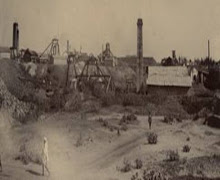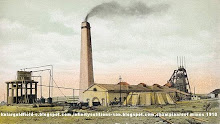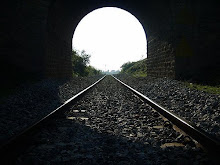
Gold was first mined in the area in the 2nd and 3rd century AD by the digging of small pits. During the Chola period in the 9th and 10th century AD the scale of the operation grew, but large-scale mining only came in the 1850s under the British with more manpower and sophisticated machinery. In 1873, M.F. Lavelle, a resident in Bangalore, applied to the Mysore Government for the exclusive privilege of mining in the Kolar district. His request was granted and he commenced operations by sinking a shaft near Urigam (Oorgaum) in 1875, but, finding that large capital would be required he, in the following year and with the approval of the government, transferred all his rights and concessions to the late Major General G. de la Poer Beresford. Major General Beresford formed a syndicate known as the Kolar Concessionaries (now merged into the Gold Fields of Mysore Co.) which took up the matter in earnest, and gradually acquired the area known as the Kolar Gold Fields.
The following were the principal Mines on the Gold Fields in 1905:-
The Mysore Gold Mine; Champion Reef Mine;
Ooregum Mine;
Nundydroog Mine;
Tank Block Mine;
Balaghat Mine;
Gold Fields of Mysore;
Coromandel Mine;
Oriental Mine;
Nine Reefs Mine;
Road Block Mine;
Mysore Reefs Gold Mines.
The Mysore Gold Mine; Champion Reef Mine;
Ooregum Mine;
Nundydroog Mine;
Tank Block Mine;
Balaghat Mine;
Gold Fields of Mysore;
Coromandel Mine;
Oriental Mine;
Nine Reefs Mine;
Road Block Mine;
Mysore Reefs Gold Mines.
1) Champion's Reef Mine
Gifford's Shaft (the venue of our adventure! Bang opposite Naional Institute of Rock Mechanics) Tenance Shaft
Glen Shaft
One Shaft
2) Marikuppam Mine
Yadgar Shaft
Petrikal Shaft
Oncock Shaft
3) Ooregaum Mine
Two Shaft
Bullion Shaft
Main Shaft
4) Koromandal / Coromandel Mine
Henry Shaft
5) Golkunda Mine
Gifford's Shaft (the venue of our adventure! Bang opposite Naional Institute of Rock Mechanics) Tenance Shaft
Glen Shaft
One Shaft
2) Marikuppam Mine
Yadgar Shaft
Petrikal Shaft
Oncock Shaft
3) Ooregaum Mine
Two Shaft
Bullion Shaft
Main Shaft
4) Koromandal / Coromandel Mine
Henry Shaft
5) Golkunda Mine
Research on the Cornish connection with the Kolar Goldfields has only recently commenced , the following is a brief account of the information collected to date.
In 1873 a Mr. M.F. Lavelle, a resident in Bangalore, applied to the Government for the mining rights within the Kolar District with the intention of finding coal. His request was granted and he commenced operations by sinking a shaft in 1875, near Oorgaum. Finding that greater capital would be required to carry out the work he transferred all his rights and concessions to a syndicate formed by Colonel Beresford and known as the Kolar Concessionaires. By 1881 the Concessionaires had secured the services of Messrs. John Taylor & Sons, a firm of mining Engineers in London who had been involved in the management, amongst many other mining operations, of the Real del Monte Company in Mexico from the 1820's to its winding up in 1840.
It would appear that Cornish involvement in the Goldfields probably commenced around this time and was no doubt promoted by John Taylor & Co's connection with and knowledge of the Cornish hard rock miners.
Details of the European employees in 1905 include a predominance of Cornish surnames both at the mines and within the Kalor Goldfield Volunteers.
1905 Under the Commander-in-Chief in India: formed by G.G.O. 639 of 1903
Motto - "Defence not Defiance" Badge - Crossed Pickaxe and Hammer
Honorary Colonel - Richard Hancock , Esq Lieutenant-Colonel - Thomas Edward Piercey,
Commandant Majors - G.A. Paterson , C.H. Richards Captains - E. Jeffery , R.H.P. Bullen ,
F.J. Tregay , Percy Key , H.M. Leslie ,
H.T. Hincks , D. Gill Jenkins ,
J. Johns Lieutenants - G.W. Walker
W.R.C. Beudon ,
T.A. Clarke ,
N.F.K. Richards ,
W. Ward ,
H.M.A. Cooke ,
G.E. Payne ,
A.W. Jolly ,
C.H. Stonor 2nd Lieutenants - J.J. Clarke ,
R.F. Vaughan ,
H.H. Osborn ,
J.S. Anderson ,
W.C. Vine ,
R.T.J. Weeks Staff - Adjutant - Capt. F.G. Pierce , 69th Punjabies;
Medical Officer - Surgn,-Maj. T.J. O'Donnell;
Hony. Chaplains - Rev. L.G. Pollard ,
Rev. J.H. Fraysse; Hony, Major - Edgar Taylor ,
Quarter Master - Hony. Lt. G.W. Bickley Surgeon Lt. J.D. O'Donnell Sergeant-Major -- H.W.
Goble ,
Oorgaum Sergt.-Instructors - A. Goldfinch , L. Taylor ,
R. Motley , 1st Essex, Officiating, Gold Fields Qr. Mr. Sergeant - D.A. Spence , Chanpion Reef
Until the year 1902 all the machinery in the Mines was worked by steam power, but in August 1902 the completion of the Cauvery Power Works, brought about a complete revolution in the working of most of the Mines on the Fields, where by 4000 H.P. of electric energy is transmitted to the Gold Fields from the Cauvery Falls Power Station received at an elaborate Transformer House centrally situated and distributed to the various mines in quantities contracted for and by the means of this electric power the majority of the mines work their milling and stamping machinery.
The Kolar Gold Field water Supply Scheme was completed in 1901-1902. The water was drawn from the Bettamangala and Ramasagram tanks. Rotertsonpet suburb was established around 1901, and the name was given by the then H.H. the Maharaja in commemoration of the memory of Sir Donald Robertson, KCSI, late Resident in Mysore, on 15th August 1903. In the same year Kolar Gold Fields established a Corps known as the Kolar Gold Fields Volunteers, and earlier part of the Bangalore Rifle Volunteers . The Corps had its Head Quarters at Oorgaum.
In Oorgaum, there was a Kolar Gold Field Club and Kolar Gold Fields Library in a building called Oorgaum Hall. In 1905, S.M. Pritchard (the Clubs Hon. Secy), H.H. Osborn (H. Treasurer), with R.R. Rodda. G.H. Burnell (Secy & Librarian), Committee members P. Bosworth-Smith, H.M.A. Cooke, Rev. L.G. Pollard.
Some of the schools that existed then were Kolar Gold Field School,
Nundydoog Mines (1901),
St. Joseph's Convent Girl's School (Order of St. Joseph of Tarbes), Champion Reef,
St. Thomas School. One of the bigger public instutions was The Kolar Gold Field Gymkhana Club, which hosted a Polo, Golf and Hockey team.
Nundydoog Mines (1901),
St. Joseph's Convent Girl's School (Order of St. Joseph of Tarbes), Champion Reef,
St. Thomas School. One of the bigger public instutions was The Kolar Gold Field Gymkhana Club, which hosted a Polo, Golf and Hockey team.
Churches:
St. Paul's Church (S.P.G. COE), which was shared with a Tamil congregation, the services at different times.
Wesleyan Mission, English and Tamil congregations.
St. Thomas' School Chapel (National Church of India)
Lutheran Mission, Tamil congregation at RobertsonpetRoman Catholic Churches,
Our Lady of Victories (Champion Reef), which also covered St. Mary's Anglo-Vernacular School. St. Sebastion (Coromandal) Entertainment was provided by the Kolar Gold Fields Choral and Dramatic Society, and for the souls of many, the Royal Army Temperance Association was available.
.... Some Notes ... KOLAR GOLD FIELDS. (KARNATAKA) This little mining town, about 22 kms, east of Bangalore, was once the pride of the erstwhile Mysore state, and also that of India. This gold mine produced a sizeable amount of gold during the days of the British Raj. It employed nationals from Britain, Italy, Germany and also a good number of Angto -Indians. The entire labour force in those days, were the Tamils from the neighbouring state of Tamil Nadu, who were the best preferred for their honesty, ability to work hard and with no ties to labour unions.
As the years rolled by, and the gold reserves diminished, coupled with the freedom struggle, the Expatriates began to leave the mines, though the British, who owned the mines still, held on to key positions. Anglo-indians were the next favoured kind and they took over many Administrative & , Managerial posts. Meanwhile the school of mines which was then started began to produce some good Indian Miners & Engineers, who were soon absorbed into Managerial levels on the mines.
By this time the Central Government took over the Mines from the British and later handed over the Mines to the State Government. Gold reserves dwindled and the once prosperous Gold Mine showed signs of decline. Emigration was now in the air and the Anglo-indians were leaving India to greener pastures in large numbers. Some to U.K., some to Canada, Australia, New Zealand and even to some countries in Europe. The skilled personal left to the Gold Mines in Ghana, West Africa.
Talking of Kolar Gold Fields brings back old memories of the social life there, in those days. With four or five Clubs with facilities for Tennis, Billiards & Snooker (skittles on Sundays) and even a separate Golf Club, life was something very did@rent. The frequent Dances and social functions were something to be witnessed to believe. Come December, the whole place will be humming with activity. Dances, Christmas Trees, Gifts for children in all these Clubs, were the highlights of this festive season. Many from Bangalore would also come to these Dances at Kolar Gold Fields.
Well Kolar Gold Fields is no longer the same, economically and socially. The posh Bungalows have been divided and sub-divided to accommodate more familes. The glass panes in the windows have been replaced by plywood when broken and the walls have not seen paint for quiet awhile. The then renowned KGF Club, which once was out of bounds for the Indians, is failing to bits The brass door handles, knobs and hinges have all gone. The highly polished floorboards have not seen wax for a few decades. The sterling silver cutlery which were specially ordered fcom 'the U. K for the Club's Restaurant with the emblem of the Club on it have all disappeared. There is not even cold beer on a summers Sunday morning to quench ones thirst.
It is sad but that is an end of an era.
This writeup above from Kolar Gold Field Rifle Volentreers is by Mr. Valentine. He is a member of the Institute of Engineers and also a member of the Institute of Engineering Designers of U.K He started his career as a draftsman in KG. F in 1960. He went to Ghana in West Africa in 1974 and was later promoted as senior Design Engineer in the Gold Mines of Ashanti After 12 years abroad he has settled in Bangalore, India, and is now working in a Design & Drafting Section of an Engineering Project Management Firm, as a Manager.
Birth of the city
The local Kannada speaking villagers refused to work in the deep pits of the mines and so people from the North and South Arcot districts of Tamil Nadu were settled around the various Shafts and a city was born.
Even today places in the area have names reminiscent of the presence of British people there - the two main towns Robertsonpet and Andersonpet being named after two British officers in the mines.
Legend
There is a legend about why the Kolar Gold Fields are so full of gold. The story goes back to the Tretha Yuga, the time of Lord Rama. During his 14 years of vanavasa, Rama along with his wife Sita and brother Lakshmana wandered through the dense forests of the present day Avani village, which is about 10 miles from the gold fields, where they set up their hut and lived. Surpanaka, sister of Ravana, one day happened to see Rama and asked him to marry her. He refused, as he was already married, so she approached Lakshmana, who got angry with her and cut off her nose
Ravana was angry when he heard what had happened to his sister and he wanted to take revange on Rama. He sent Maricha in the disguise of a golden deer to the hut where Rama was living and Sita was so attracted to the golden deer that she asked Rama to get it for her. The deer, being a magical one, eluded Rama for a long time until they reached what is today the Kolar Gold Fields. Meanwhile Lakshamana, worried about his brother, went in search of Rama, leaving Sita alone in the hut. Ravana, in the disguise of a sage, abducted Sita, taking advantage of the situation. Rama finally managed to kill the golden deer and according to the legend, the remains of the deer spread over a large area, which is the reason for presence of gold in KGF.
Demographics
Tamil and Kannada are widely spoken by the people here apart from Telugu which is spoken by a substantial group of people. Three hundred thousand people lived in the Kolar Gold Fields at its peak production, but since the closing of mines in 2003 the population has reduced to less than a hundred thousand. Signboards are displayed predominantly in Kannada, Tamil and English all over KGF, and it is a bilingual town where people can speak two languages at ease.
More then 90% of peoples speak Tamil language.
This city has more number of churches ,most of them are Christians.
by
santhosh





















No comments:
Post a Comment